Almond ice cream
Have you been dreaming of almonds lately? If so, know that ancient Greek and Roman dream-interpretors might have understood this to represent a journey.
Luckily, most almonds these days are sweet, so your dream would probably have pointed towards a prosperous journey. And sweet almonds do suit our purposes far better than the potentially deadly bitter almond (“cyanide ice cream, anyone?”).
Almonds grow on the rather small almond tree. While the external hulls of almonds may make them nut-like in appearance, they are actually fruits (drupes, or stone fruit, to be exact), with the edible part being the seed. The culinary uses are innumerable … no wonder then, that almond ice cream has so many fans!
While all ice cream bases would work fine, I thought I would honour the Mediterranean basin – where the almond’s botanical cradle is believed to have stood – with an Italian gelato base.
The Italian gelato base
Turning once again to Fernanda Gosetti for inspiration, the recipe I chose was closely adapted from the ice cream gold-mine “Il Gelato”. If you have read the post on Gosetti’s vanilla base, you will note that this is mainly a variation on that one. However, the method used to infuse the almond flavour is quite interesting, so do read on!
Gelato is typically prepared on basis of a custard, meaning that its base is cooked on the stove. And as with most custard recipes, this one also start out with mixing sugar and eggs. Soon after, we will begin to pour in hot milk and cream, “tempering” the eggs (i e avoiding that the egg yolks transform into scrambled eggs). At least that is what you would do if you follow the mainstream views on custard cooking.
If you trust more alternative, iconoclastic views, however, you might daringly just put all the mentioned ingredients together in a sauce pan right away, whisk thoroughly and then begin the climb towards an appropriately pasteurising temperature.
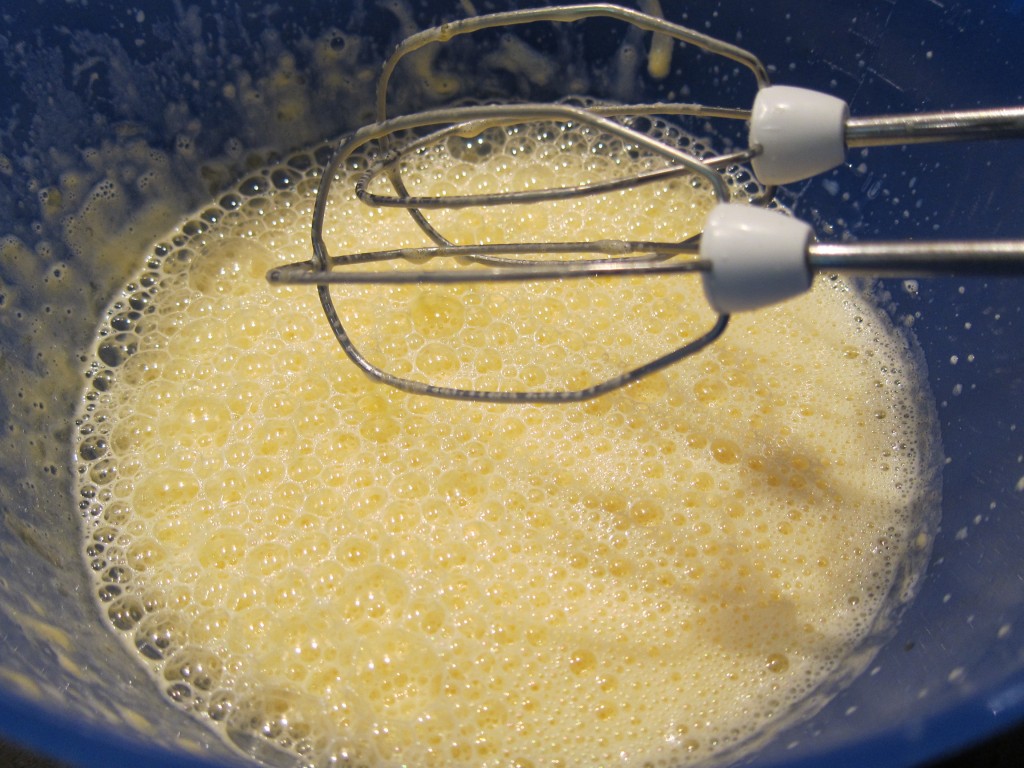
Tempering the egg-sugar mixture with the heated milk and cream. The “alternative school” would just mix all the ingredients together at once, but today, I adhered to the traditional way of cooking the custard base.
After having cooked the custard base on low-medium heat under constant whisking, the base reached the desired temperature (about 82-84º Celsius/189-183 ºF).
I would recommend using a thermometer, but in case you do not have one, the Spoon test might help you to decide whether the base has thickened sufficiently (dip a spoon or spatula into the base, try to draw a line in the custard clinging to its back with a finger, and see if the line sticks).
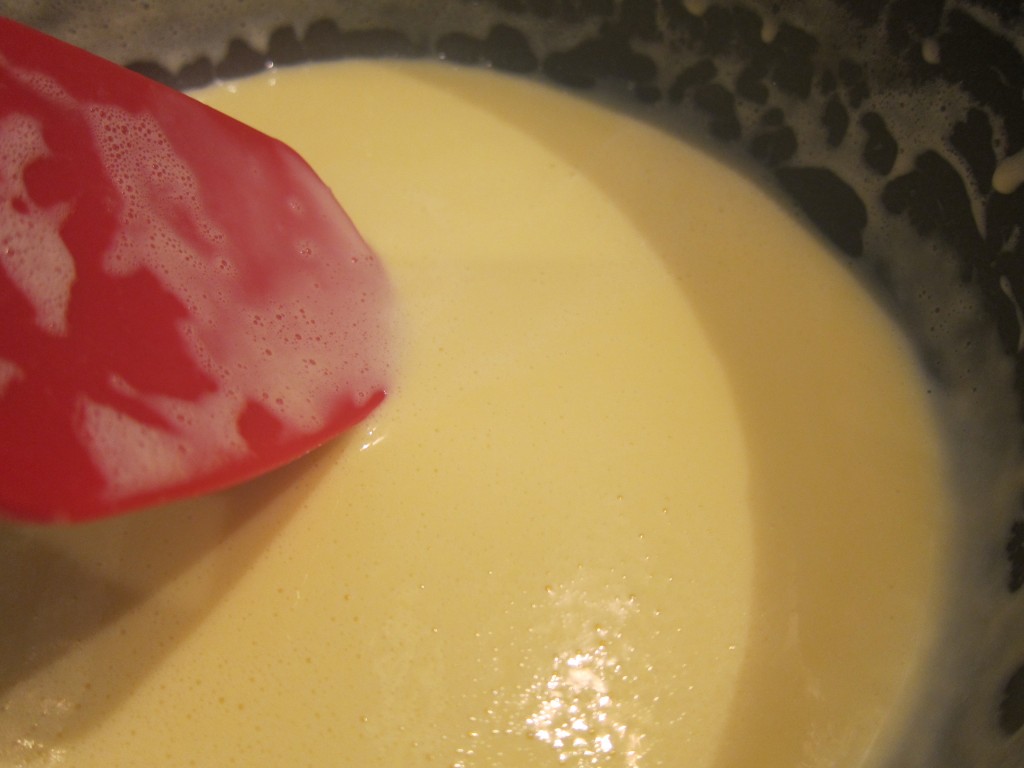
Pasteurised yet? The Spoon test might give an indication … and a thermometer might give certainty;-)
As soon as the custard base has reached the desired temperature, it should be cooled down as quickly as possible.
In case you don’t happen to have snow outside your house, turning your sink into a mini-Arctic pool with cold water and ice cubes would be a perfect and quick method. And in case you lack ice cubes, filling the sink with cold water might still be reasonably fast (ice cubes or no ice cubes, I use this method all the time).
Once cooled down, the base should be put in the refrigerator to chill and mature, preferably over night.
So far the base – now to the almonds
The recipe suggests mixing together the almond powder/almond flour with a few tablespoons of (still warm) ice cream base. Yummy! At this particular stage of the process I began to notice a striking resemblance to almond paste take shape! Suddenly, I realised why so many almond ice cream recipes simply use almond paste for flavouring … Well, no short cuts here!
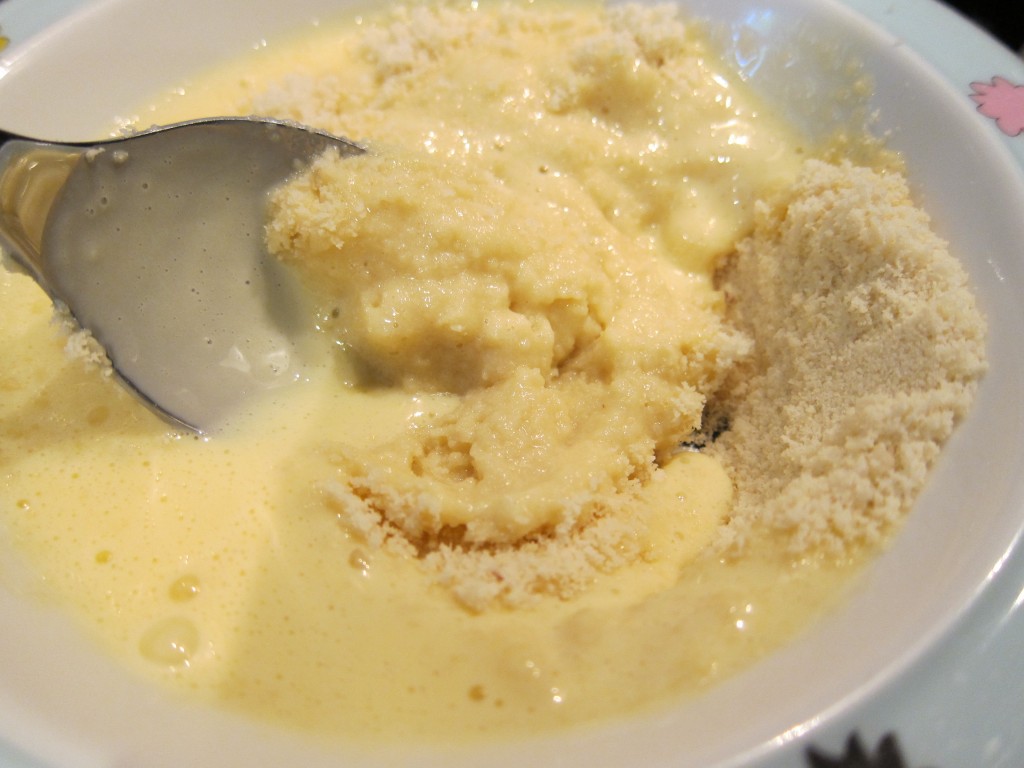
Combining the almond powder with some of the ice cream base … it sure felt like preparing almond paste!
Putting it all together
With the almond mixture ready, all that remained was to mix it well into the ice cream base. So I did, and proceeded to the sink for general cooling down (see the photo above). When the ice cream base had cooled down, I put it in the refrigerator to chill and to mature over night. The next day, I churned the base in the ice cream machine. Soon, I could conclude that the almond ice cream that took shape was refreshingly light, genuinely almondy and simply de-li-ci-ous!
Like a rock – a note on freezing and storage
As mentioned, our base is of the gelato-type: not much air, quite a few eggs, and a lot of milk. In case you don’t plan to eat the whole batch relatively fresh, your final ice cream will most likely freeze quite hard in your freezer (unless you own a typical gelato display freezer, ventilated by cool air and keeping the ice creams at scoop-friendly minus 10 degrees Celsius/14ºF … ).
So, what can you do about that?
The simplest solution would probably be to enjoy the gelato while it still is quite fresh (i e before it has any particular time – if any – in the freezer).
The next simplest method would probably be to remember to take out the ice cream from the freezer about 20 minutes before serving time. Yet another way for those who do not mind alcohol in their ice creams would be to add some alcohol to the ice cream base in order to soften the freeze (Amaretto almond liquor would be a very good choice here).
Or – blasphemous thought! – you could even micro-wave the ice cream for a few seconds to soften it. This last alternative is likely to destabilise the internal structures of your ice cream in major ways, however, so avoid using that one if you don’t plan on eating it all at the occasion!
- 55 gram almond powder/almond flour
- 5 egg yolks
- 125 gram sugar
- 400 ml (1¾ cup) milk
- 100 ml (slightly less than ½ cup) cream
- (optional: about 2 tablespoons of almond liquor, such as Amaretto)
- In a bowl, whisk together the egg yolks and the sugar.
- In a saucepan, bring the milk and the cream to a boil.
- While whisking, pour - little by little, and in a thin stream - the hot dairy into the egg yolks-sugar mixture (the tempering stage).
- When the ingredients have been mixed, pour back the liquid into the saucepan.
- On low heat, continue to whisk, ultimately bringing the mixture up to about 82-84º Celsius (189-183 ºF); the stage when you should be able to draw a line through the custard on the back of a spoon (or equivalent) that stays. For added security, use a thermometer! And remember to whisk all the time - you don't want to end up with scrambled eggs!
- Take off from the heat.
- Mix carefully about three tablespoons of the ice cream base with the almond powder.
- Add the resulting almond paste to the ice cream base and whisk for a few minutes to really disperse it well.
- Let the ice cream base cool down as fast as possible. When sufficiently cool, put in a refrigerator to chill for about five hours (or preferably, over night).
- Pour the chilled ice cream base in your ice cream machine (if using, add the alcohol to the base at this stage) and churn according to instructions.
- Store the ice cream in a freezer-safe container with lid, making sure to cover the surface with plastic film before putting on the lid.
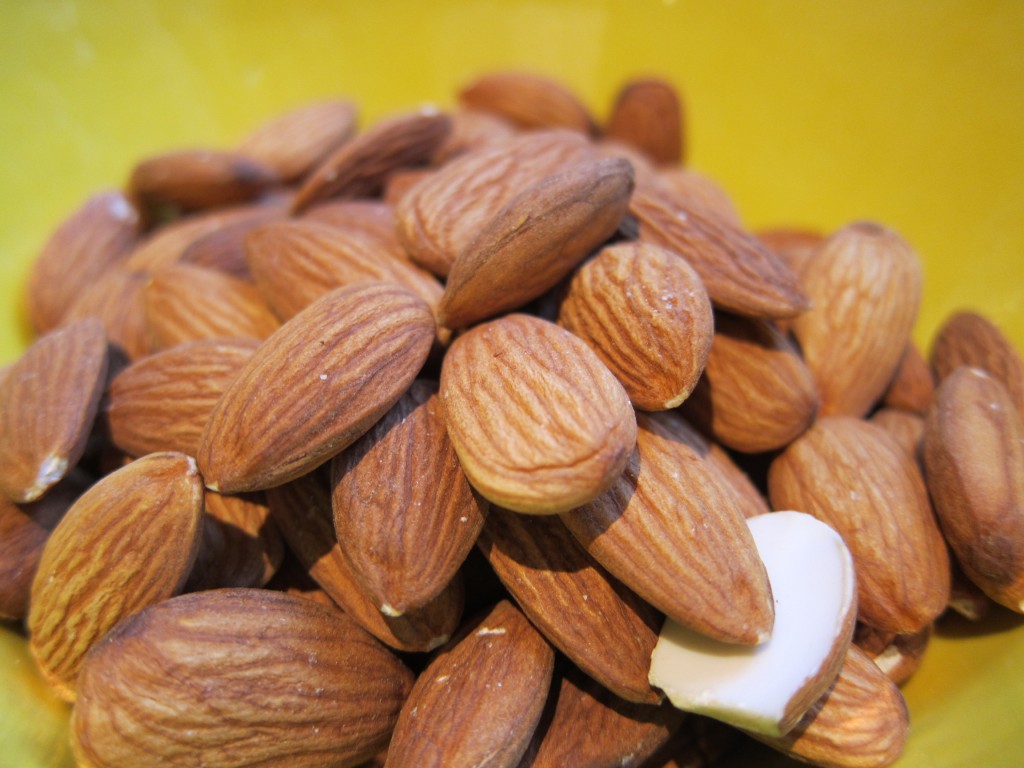
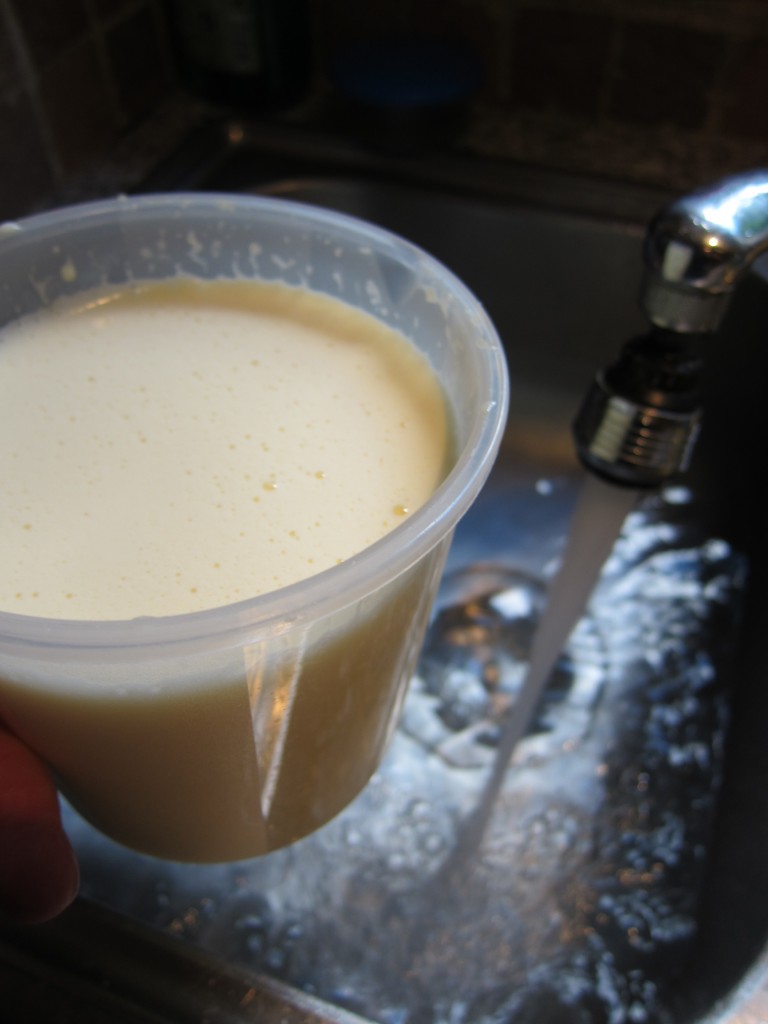
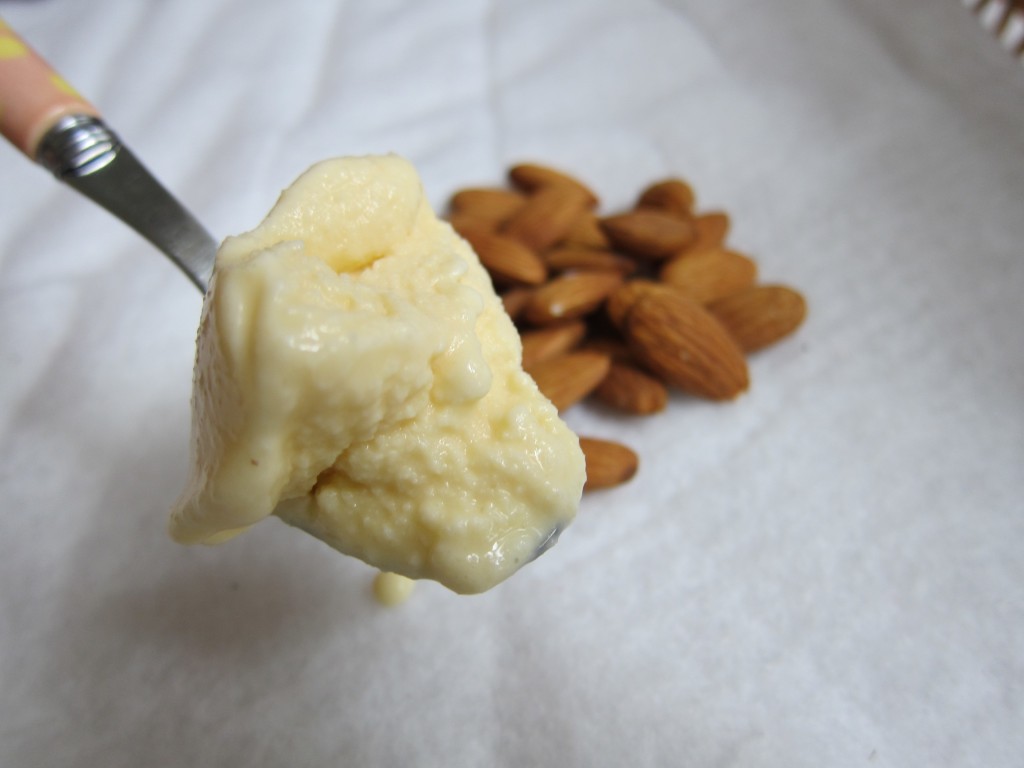
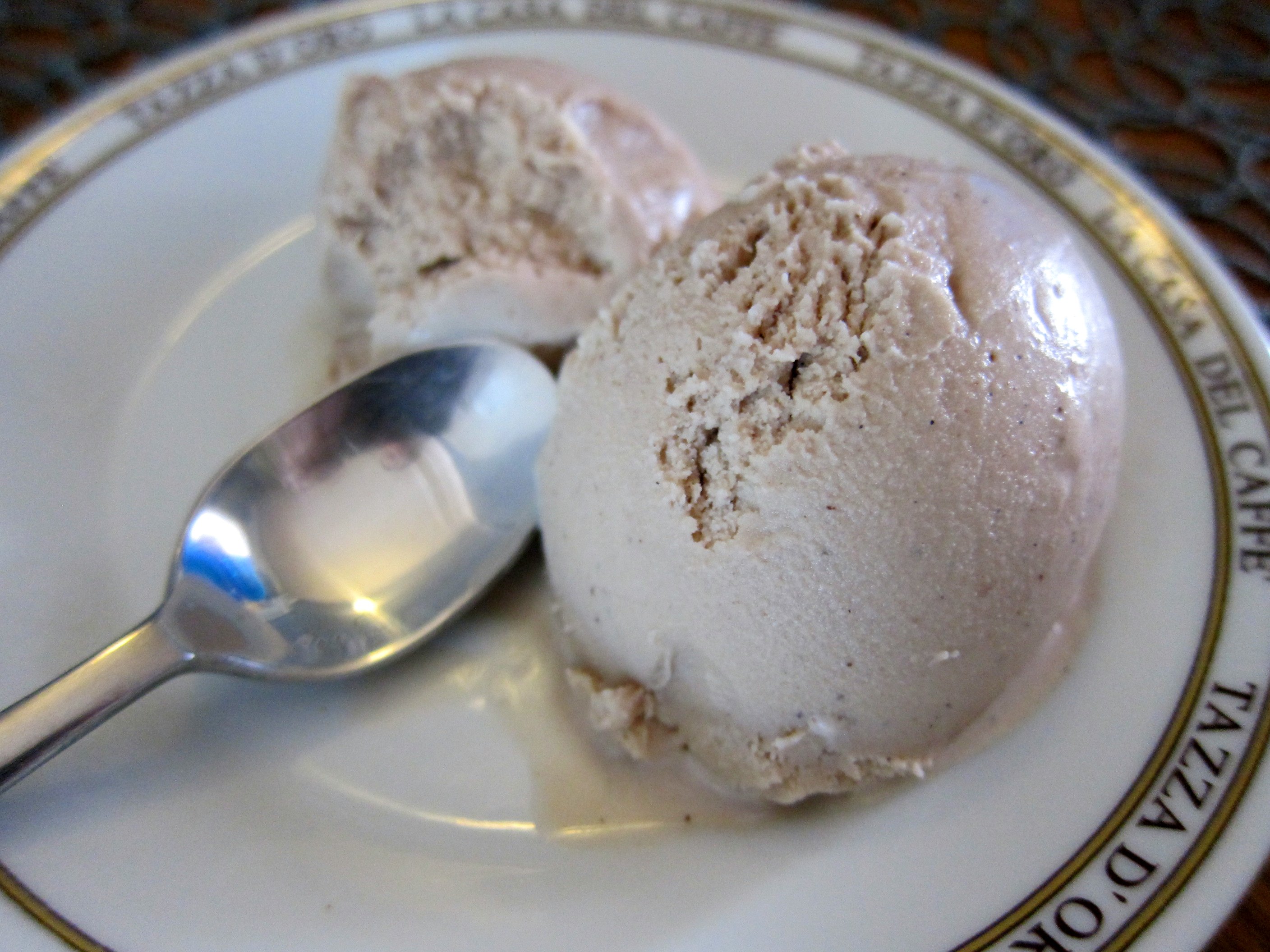
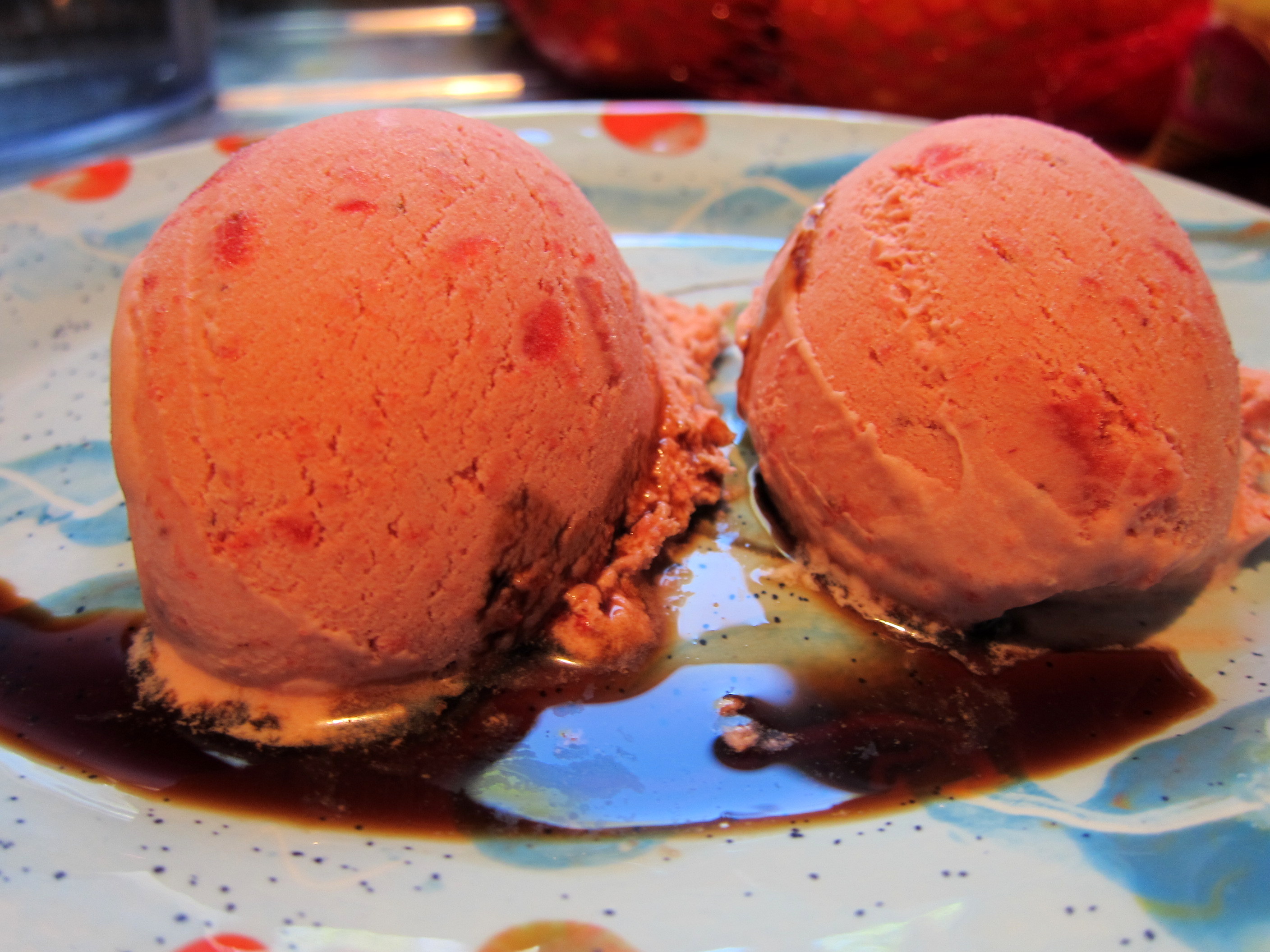
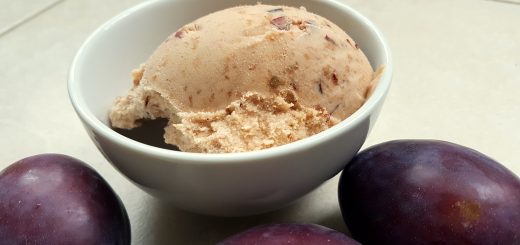


Hej Anders!
Förra veckan bjöd jag på nyponkräm och nyponsoppa gjord på torkade nypon, toppat med mandelglassen enligt ditt recept (tog bara 100 gr socker) och ett mandelflarn. Perfekt kombination och mandelglassen var mycket uppskattad.
[Last week, I served rose hip cream and rose hip soup and topped them with the almond ice cream of yours (I only used 100 gr sugar) and an almond flake. Perfect combination and the almond ice cream was much appreciated.]
/ Lena
Hej Lena! Jättekul – har aldrig funderat på att kombinera mandel med nypon, men det låter spännande och jag tvivlar ju inte ett ögonblick på ditt glass-smak-omdöme 🙂
[Great – I’ve never thought about combining almonds with rose hips, but it sounds exciting and I would never doubt your judgment when it comes to ice cream flavours 🙂 ]
When I went to Firenze, I brought back some bitter almonds and have been using them in recipes that call for almonds. I only use a few in addition to the almonds or almond paste called for and I have to say that they make such a difference! There is a slight bitter edge but there is also a nice rounded nutty flavor. I think that they add umami to the flavor profile and I must say everyone who tastes my almond desserts is blown away and comments how good it is. No one has died either! If you can get them, you should try them. They make a big difference.
William, thanks for your message!
I am sure that the bitter almonds can put a nice twist! While coming from a country where the sale of bitter almonds neither is restricted nor forbidden, however, I think it is important to stress something which you already hinted at: bitter almonds are, unfortunately, toxic. This should, as you also have indicated, likely not be a problem for most people, if the bitter almond is used (very) sparingly and more like a spice (Nutmeg and Tonka beans are, after all, also toxic). Just be aware!